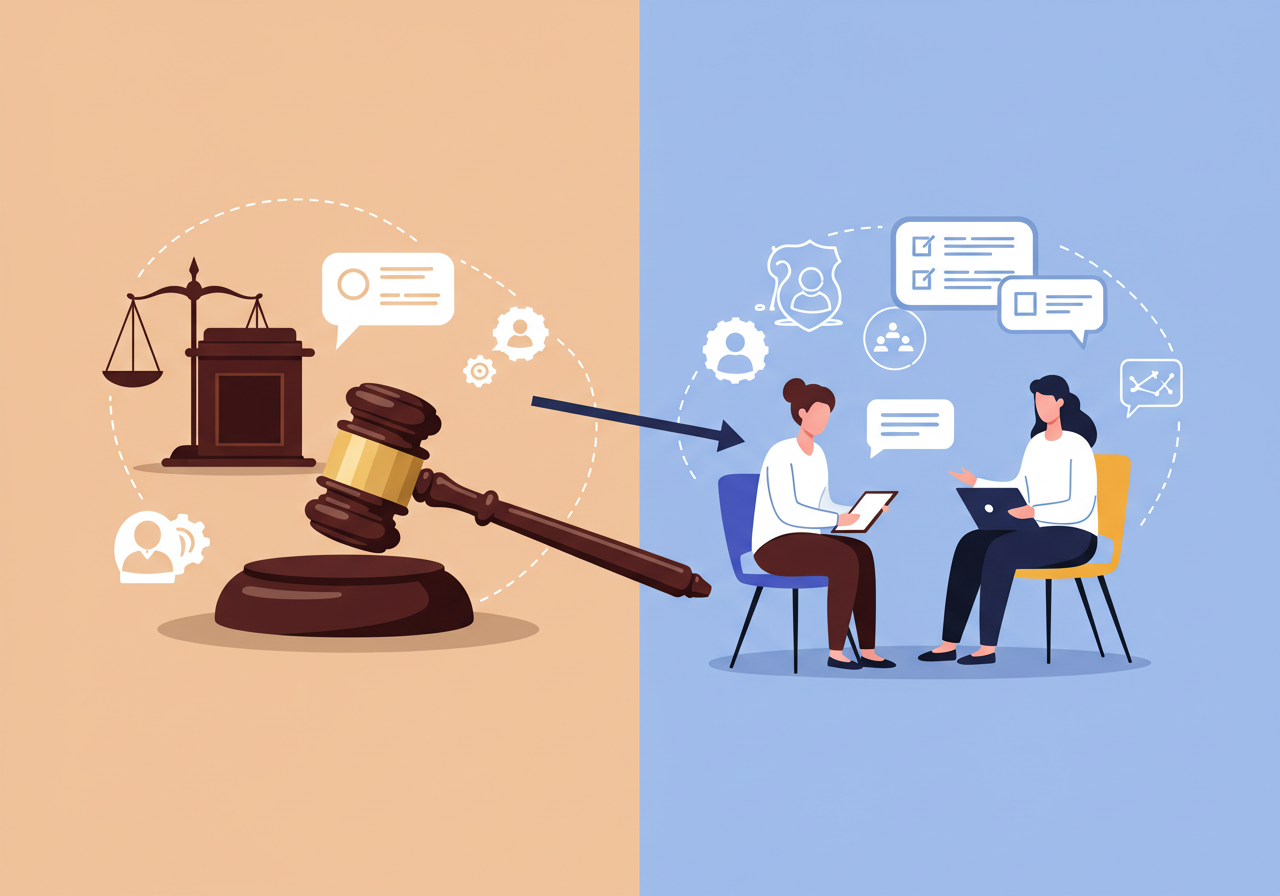At RISE25[1]—The world’s premier conference on addiction, mental health, and justice innovation—independent forensic toxicology consultant Paul Cary, M.S., addressed over 7,500 justice and treatment professionals. He tackled one of the most pressing issues in treatment court practice: the confusion around drug testing programs.
Based on past practices, the growing challenges TCs face daily include potentially traumatic urine collection practices, the lack of clarity around testing frequency, specimen options, evaluation of results and most importantly, the dual goals of drug testing. As explained, treatment court practices often conflate two distinct purposes of drug testing—forensic and clinical—leading to misapplication and confusion.
Understanding the Two Distinct Goals of Drug Testing
Cary stressed the importance of understanding how clinical drug testing differs fundamentally from forensic drug testing:
Clinical Drug Testing is conducted at the discretion of treatment professionals and is used
solely as a therapeutic tool to assess participants’ clinical needs and to guide treatment modifications.
Typically involves:
- Screening only – no confirmation of positive results.
- Unobserved collections – no chain of custody required.
- Flexible frequency – not based on standardised court practices.
- Confidential results – not shared with the court or used for sanctions.
Justice professionals direct Forensic Drug Testing to monitor abstinence and compliance with court requirements.
Key features include:
- Observed collections
- Chain of custody
- Random, unannounced testing
- Confirmation of positive results
- Results are shared with the court and may be used for sanctions or incentives.
These differences are now clearly reflected in the updated Adult Treatment Court Best Practice Standards,[2] published on 27 May 2025. Four primary authors and over 40 expert contributors in the field, including toxicologists, developed these standards.
Key Questions Answered from the Revised Standards
Q: What’s the difference between forensic and clinical testing?
A: Forensic testing is court-directed and follows strict procedures. On the other hand, treatment professionals direct clinical testing for therapeutic purposes and do not follow the same forensic protocols. Clinical test results are private and cannot be used in court.
Q: Why do we need both types of testing?
A: Clinical drug testing supports recovery by helping providers:
- Adjust treatment plans
- Identify relapses
- Respond to emergencies
- Confirm sobriety after a relapse
- Provide support when a participant self-reports substance use
Q: Are discrepancies between clinical and forensic results expected?
A: Yes. Differences in specimen types, collection methods, and detection windows can result in discrepancies. Only forensic results are used for court actions.
Q: Can defence attorneys use clinical test results to dispute forensic ones?
A: No. Clinical results do not meet forensic evidentiary standards and cannot be used to challenge court-ordered drug test outcomes.
Q: How does separating the two testing types improve fairness?
A: It ensures participants:
- Know which results affect their legal standing
- Can be open with treatment providers without fear of punishment
- Trust the process and receive appropriate support
Q: Does this reduce unnecessary testing and cost?
A: Yes. Courts and providers are encouraged to coordinate testing schedules and avoid duplicate tests unless clinically necessary, saving resources and reducing participant burden.
Q: What guidance is offered on specimen types?
A: The revised standards now include a detailed table outlining the advantages and disadvantages of five specimen types. While urine remains the gold standard, especially for forensic testing, oral fluid is gaining attention due to its practicality in virtual or rural settings, though it has a shorter detection window.
Q: Can courts add new specimen types (e.g., combine oral fluid with urine)?
A: Yes, but it increases the risk of discrepant results due to differing detection windows. Importantly:
- Both test results may be correct
- A negative in one does not invalidate a positive in another
- Proper interpretation is key, not automatic dismissal
Q: When can courts reduce drug testing frequency?
A: The gold standard remains twice-weekly urine testing, but frequency may be reduced when participants have achieved early remission of a substance use disorder AND are reliably engaged in recovery management activities and preparing for graduation.
In other words, if a participant has demonstrated clinical stability (at least 90 days), has shown no cravings or withdrawal symptoms, AND at the same time is actively engaged in recovery and preparing for graduation, in that case, the frequency of drug testing can be reduced.
Some individuals may require longer stability (e.g., up to 180 days) depending on:
- Age of onset of substance use
- Duration and severity of use
- Use of high-risk substances like methamphetamine or fentanyl
Q: Should courts accept test results from outside sources?
A: No. Drug testing outside court supervision presents serious risks:
- Possibility of tampered or unreliable specimens
- Lack of verified collection protocols
- Unknown testing cut-off levels or chain of custody
These results should not be accepted as evidence or to challenge court-ordered testing.
Q: Why is virtual collection—especially oral fluid testing—being explored?
A: Virtual collections support equitable access for:
- Participants with disabilities
- Rural residents without access to testing centres
Courts may designate non-affiliated labs or professionals for remote testing if proper oversight is in place.
Conclusion
RISE25 reinforced that drug testing is not a one-size-fits-all process. Each treatment court is responsible for realigning its drug testing programs to promote trust, transparency, and fairness while supporting participant safety and effective treatment outcomes.
The 2025 Best Practice Standards provide the tools and clarity needed to help courts make this shift successfully, ensuring legal integrity and clinical effectiveness.
[1] https://allriseconference.org/
[2] https://allrise.org/publications/standards/


